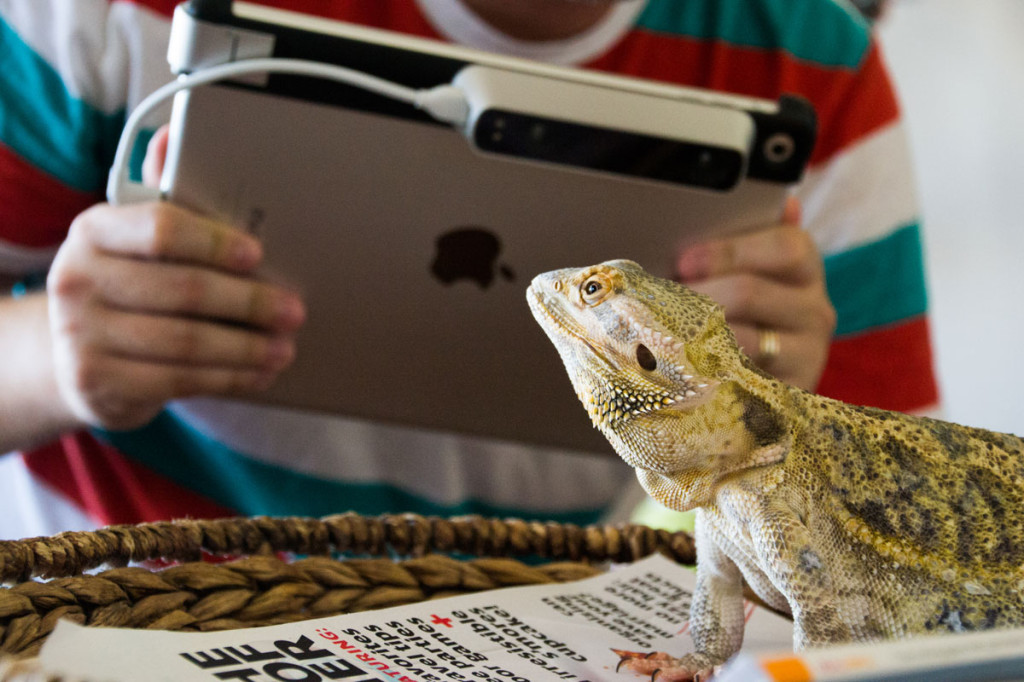Occipital is among the first, if not the first, firm to create a low-priced, portable 3D scanner. While an amazing Kickstarter campaign got their iPad/iPhone-powered Structure Sensor off the ground, a recent $13 million funding round, gave Occipital the cash to make their powerful device even better, through the acquisition of Lynx Laboratories. Lynx Laboratories launched a Kickstarter in 2013 for their own 3D scanning device and, with this acquisition, the two teams will be able to improve the algorithms that drive the Structure to improve it dramatically.

With Lynx having catered to the professional 3D scanning market for the past two years, the Structure will greatly expand its abilities in that capacity as the Lynx team moves into Occipital headquarters in Colorado. In an interview with The Verge, Occipital CEO Jeff Powers tells the tech site that the acquisition isn’t about improving the Structure’s resolution, but reducing the errors in depth mapping. With Lynx, the firm has already reduced depth map errors from 5 inches to 1/4 of an inch. Powers says, “It’s a big deal for the idea of mapping your entire home. Usually we’re limited to an object, or an artifact, or a person. But this tech really lets us blow that out to something like a room.”
Powers says that this improvement is just one development in a long track of progress that Occipital has made since the introduction of the Structure Sensor. “From the first time somebody had a Structure Sensor to what we can do with it now is just — you wouldn’t think it’s the same device. When we launched the structure sensor and people first received units they couldn’t even capture things in color,” Powers explains. Regular readers of 3DPI will recall that, on top of that, the actual color mapping itself has been improved. Moreover, Occipital has incorporated positional tracking algorithms to allow the device to be used for AR and VR. The addition of Lynx to their team will only improve the algorithms the team is developing, with Powers saying, “With computer vision it’s as much about the algorithms as it is about the inputs.”

As I learned from the startup at CES 2014, Occipital is forging a bridge to a time when 3D scanning will be an omnipresent part of our computing experience. Developing the hardware and an accompanying 3D app ecosystem, the firm hopes to establish themselves as founders of the coming spatial computing world. The unveiling of Project Tango by Google and Intel clearly hints at a time when 3D sensors will be built into our devices and the upcoming release of the HoloLens and Oculus Rift will bring more widespread AR and VR to us in 2016. The exciting thing about the Structure, however, is that Occipital has begun implementing these technologies now, before these larger companies get to market.
Powers tells The Verge, “I think building it into smartphones is obviously going to be huge, but also building it into wearable devices is really going to be interesting, like VR and AR headsets. But it’s hard to say which will happen first.”
The new performance capabilities of the Structure will be debuted at CES, while current Structure owners will be able to receive a software update in early 2016. Just in time for the release of the aforementioned AR/VR headsets. However, with the Structure, quality 3D scanning and AR/VR will be made possible with devices folks may already own, like the most recent iPad and iPhone models. Either way, all of this points to 2016 as the year when the mixed reality ecosystem truly started to coalesce.


